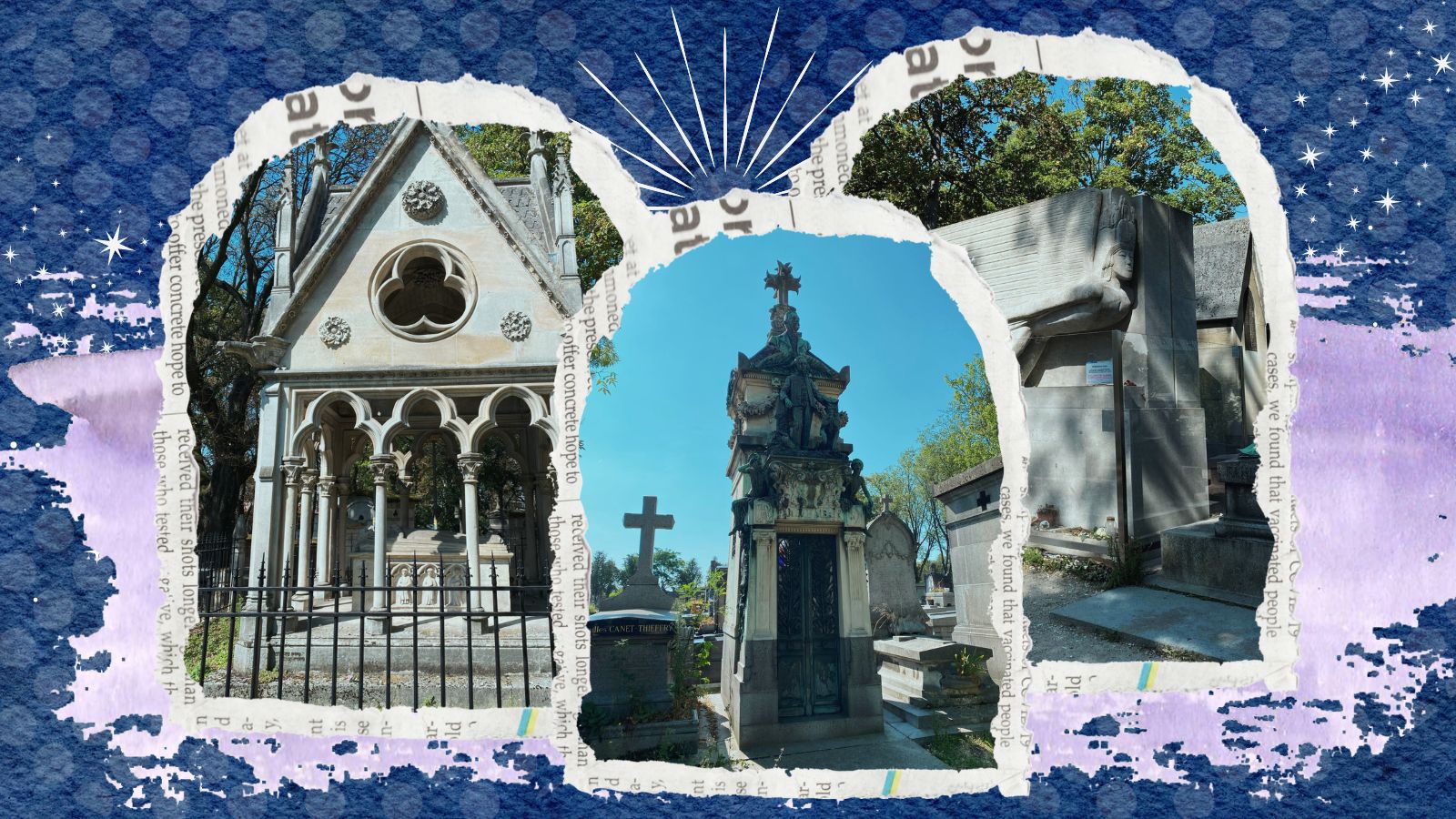Exploring Père Lachaise Cemetery, Paris, France
Père Lachaise Cemetery (Cimetière du Père-Lachaise in French) is a popular tourist destination for people wanting to visit certain celebrities’ grave sites. It was established in 1804 and is the largest cemetery in Paris at 110 acres big. It’s a public cemetery, non-denominational, and free to visit. More about the history of the Cemetery here on Wikipedia.
I enjoy visiting cemeteries when I travel as it’s a great way to see a part of local culture that’s usually hidden from view.
While Père Lachaise Cemetery is now maybe more touristy than a typical cemetery usually is, I think it’s still a nice way to pay homage to a favorite musician or author by visiting their final resting place. As a bonus, it wasn’t overly crowded when I visited, except around a few grave sites (Jim Morrison’s in particular) so it didn’t feel as stressful as visiting, say, the Eiffel Tower.
Just Gone Wandering is supported by readers! This post contains affiliate links. If you click on a link and buy something, I get a small percentage at no extra cost to you. Your support helps keep this blog running— thank you! Read full disclosure here.
France Travel Essentials
The absolute must-haves for your trip!
Père Lachaise Cemetery Quick Facts
- Opened in the year 1804
- Covers 110 acres
- Over 1 million interments
- Graves listed here on Find-a-Grave or Wikipedia’s List of burials
Address
16, rue du Repos, Paris 20e
Plus code: V96V+H9 Paris, France
Getting to the Cemetery
By Metro
Line 2 to Philippe Auguste Station — closest to the main entrance
Lines 2 and 3 to Père Lachaise Station — 500m away near a side entrance
By Bus
Route 71 to Philippe Auguste stop
Walking
The Cemetery is a little bit out of the way from most other tourist destinations, being in the 20th Arrondissement, but if you happen to be staying in The People Paris Nation hostel, for instance, you could walk to the cemetery in about 25 minutes.
Opening hours depend on the time of year, but generally
Monday-Sunday 10am-6pm
Père Lachaise Cemetery Highlights
I basically used Rick Steves’ Père Lachaise Cemetery audio tour and guidemap as the starting point for my own self-guided tour, and then I wandered around looking at stuff on my own.
Here’s some of the things I saw during my wanders:
Oscar Wilde’s Grave

Oscar Wilde, an Irish poet and playwright, died in Paris on November 30, 1900. The monument shown here was designed by sculptor Jacob Epstein and features a modernist angel and an epitaph from Wilde’s poem “The Ballad of Reading Gaol.”
Over the years, Wilde’s grave became a pilgrimage site. Visitors would kiss the tomb, leaving lipstick marks as a tribute. However, this eventually started damaging the stone on the monument, and in 2011 a restoration project was funded by the Irish government. Nowadays there’s a glass barrier around the tomb itself, meaning no more lipstick kisses.
Still, you can see at the bottom of the glass wall there’s some small gifts and letters left behind by visitors.
Psst…why not pick up the Complete Works of Oscar Wilde to bring with you when you visit his grave?
Gertrude Stein’s Grave
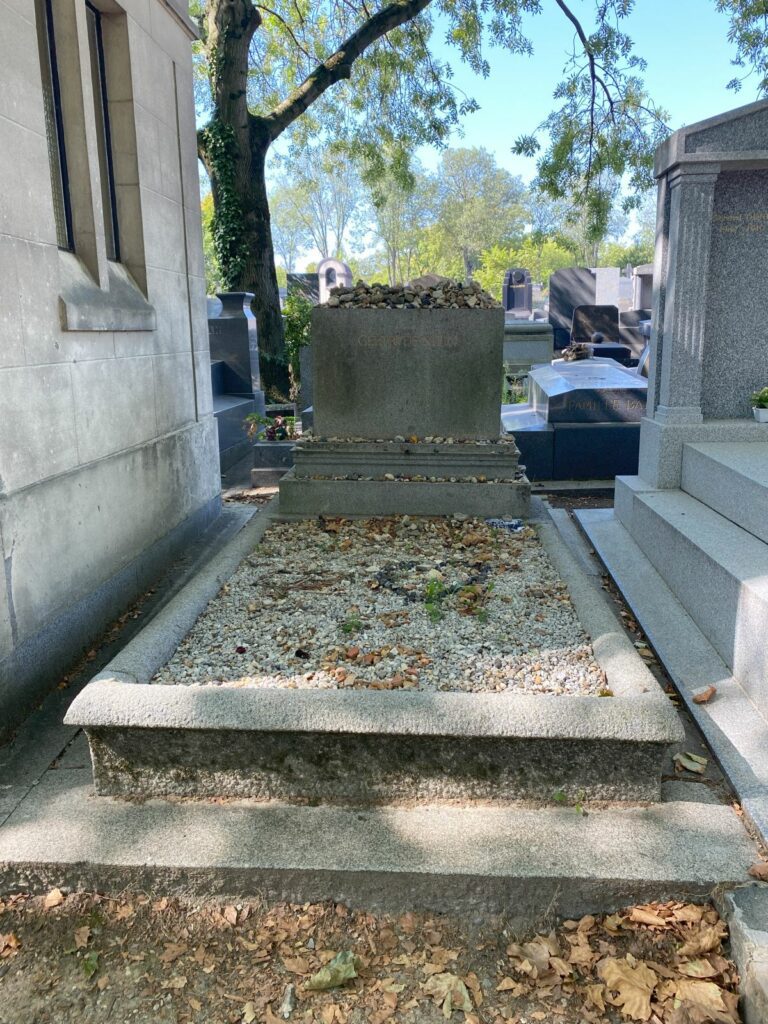
Gertrude Stein, an American novelist, poet, playwright, and art collector, died on July 27, 1946 after living in Paris for 43 years.
Her lifelong partner, Alice B. Toklas, is buried beside her, with both listed on the gravestone. It’s a modest grave and you can barely make out the inscription, but it’s still visited often by fans and admirers– as you can see in the photo. The stones stacked on the top are called visitation stones and are typically left for Jewish graves as an act of remembrance.

Edith Piaf’s Grave
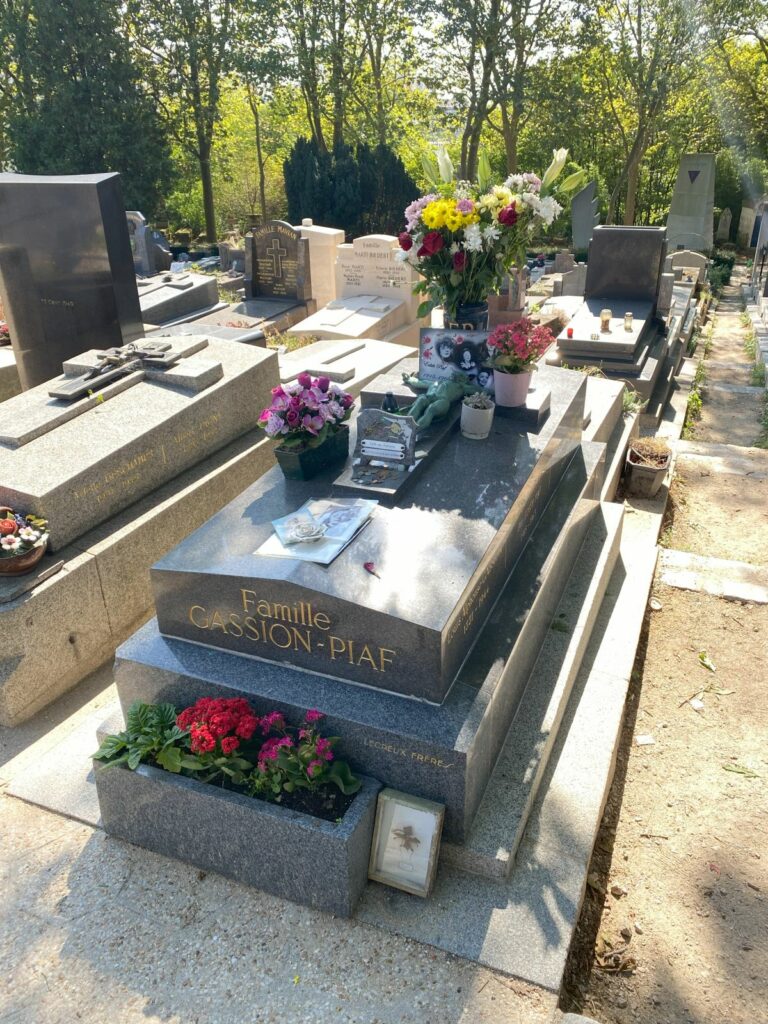
Édith Piaf, legendary French singer, died on October 10, 1963. Her tombstone is a family one, shared with her father, Louis Alphonse Gassion, and her last husband, Théo Sarapo.

Edith’s famous for a few songs, but particularly “La vie en rose.” Here’s her singing it in 1954:
Jim Morrison’s Grave
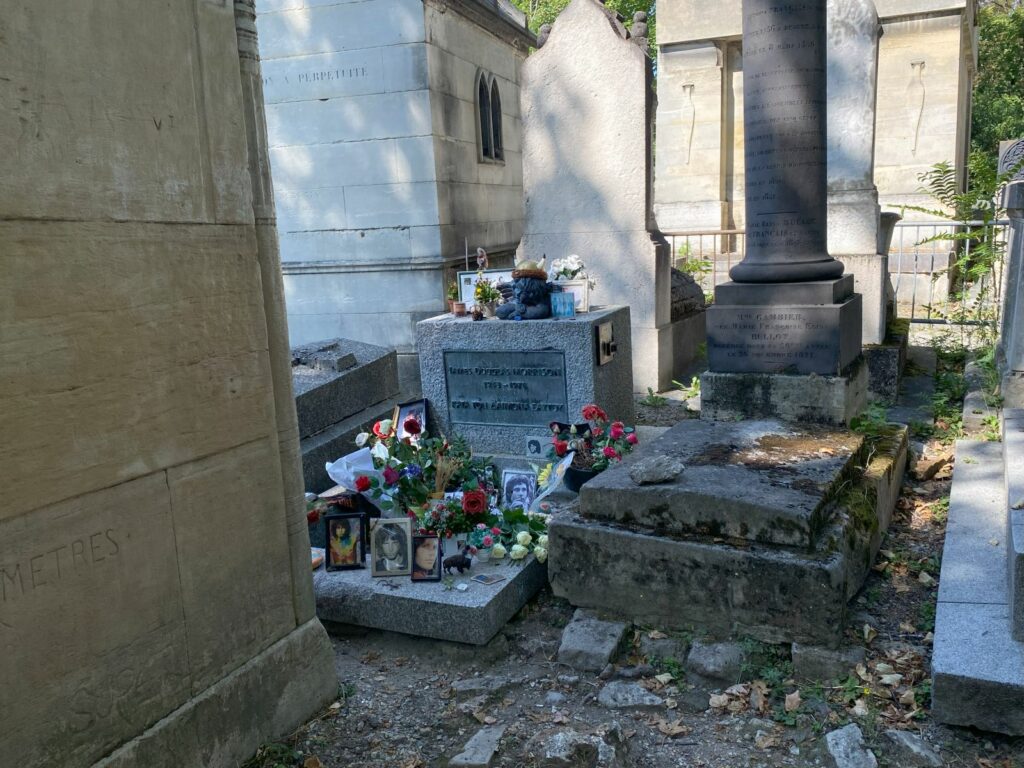
Jim Morrison, the lead singer of classic rock band The Doors, died on July 3, 1971. His grave is one of the most-visited ones in the cemetery, and indeed when I was there a small crowd of people were also trying to get a decent photo. It’s set somewhat back from the main walkway and behind other gravestones, so it takes a bit of doing. Apparently, his tombstone has been replaced several times due to vandalism.
Frédéric Chopin’s Grave

Frédéric Chopin, a Polish composer and pianist, died on October 17, 1849 at the age of 39. His tombstone shows a likeness of him, and the statue on top is of Euterpe, the muse of music, mourning over a broken lyre (symbolic of Chopin’s early death).
And a song from Chopin: “Nocturne Op. 9 No. 2”:
Héloïse & Abélard’s Grave

Héloïse and Abélard were two Medieval lovers (and scholars) who had a tragic romance, so of course their tomb is a popular destination for couples to visit and leave trinkets. I wanted to visit because I actually minored in Medieval History for my Bachelor’s and had learned about the two in one of my classes.
This particular monument was moved to Père Lachaise in 1817 from the Oratory of the Paraclete, the abbey Abélard founded.


Other interesting graves
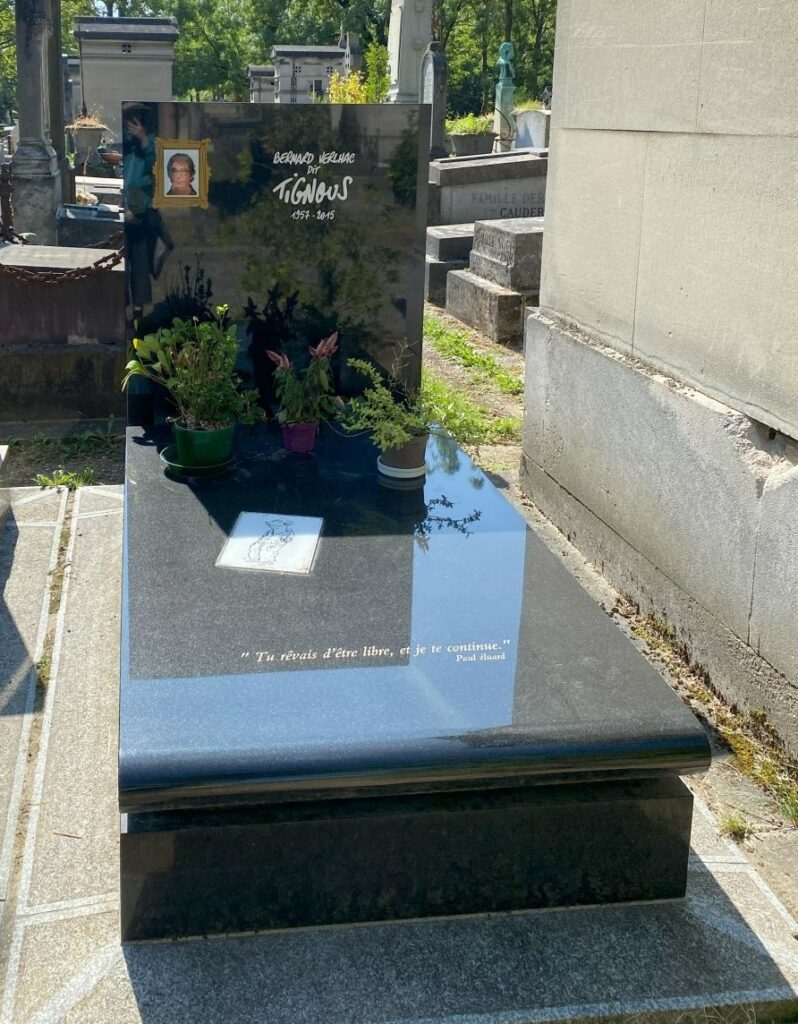
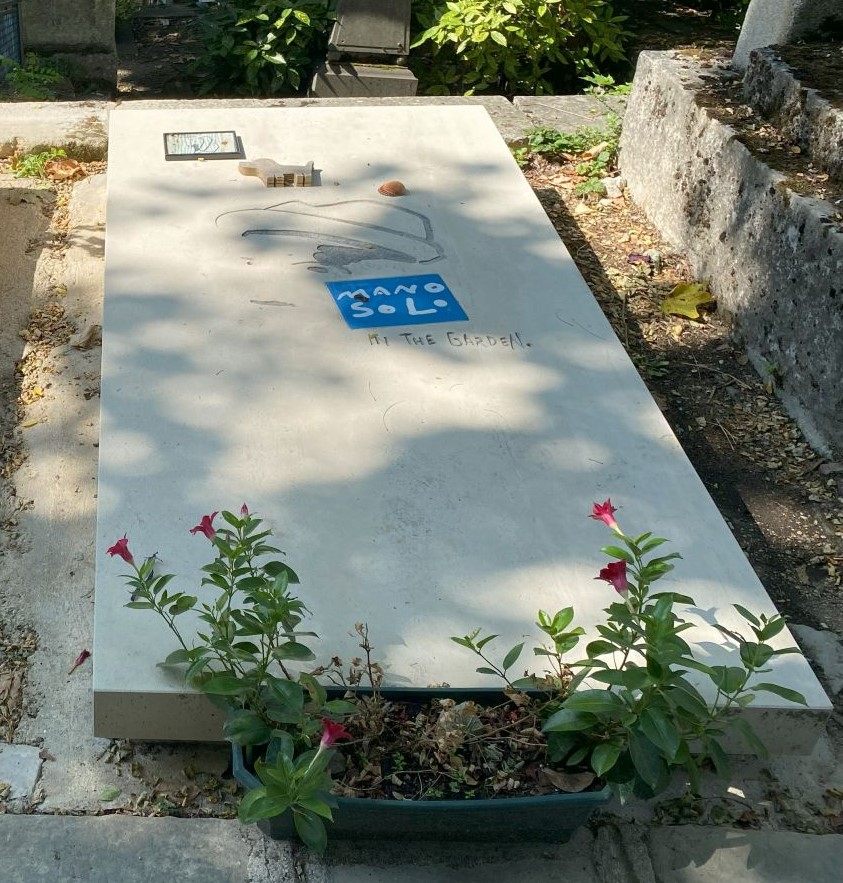






Final thoughts
I really enjoyed visiting Père Lachaise Cemetery and highly recommend stopping by if you aren’t creeped out by cemeteries in general. There’s tons of interesting tombs and grave sites with really interesting designs from over the last 200+ years the cemetery has been open, and it’s a nice quiet, shaded area to escape from the crowds. I recommend blocking off at least two hours to wander around the whole thing.
Save to Pinterest
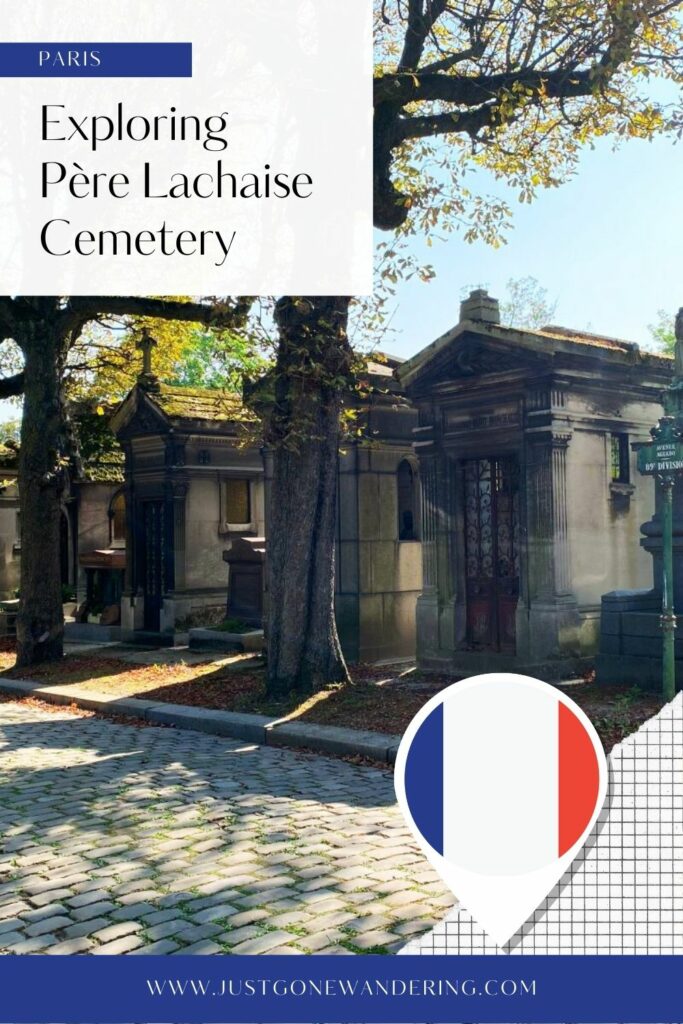
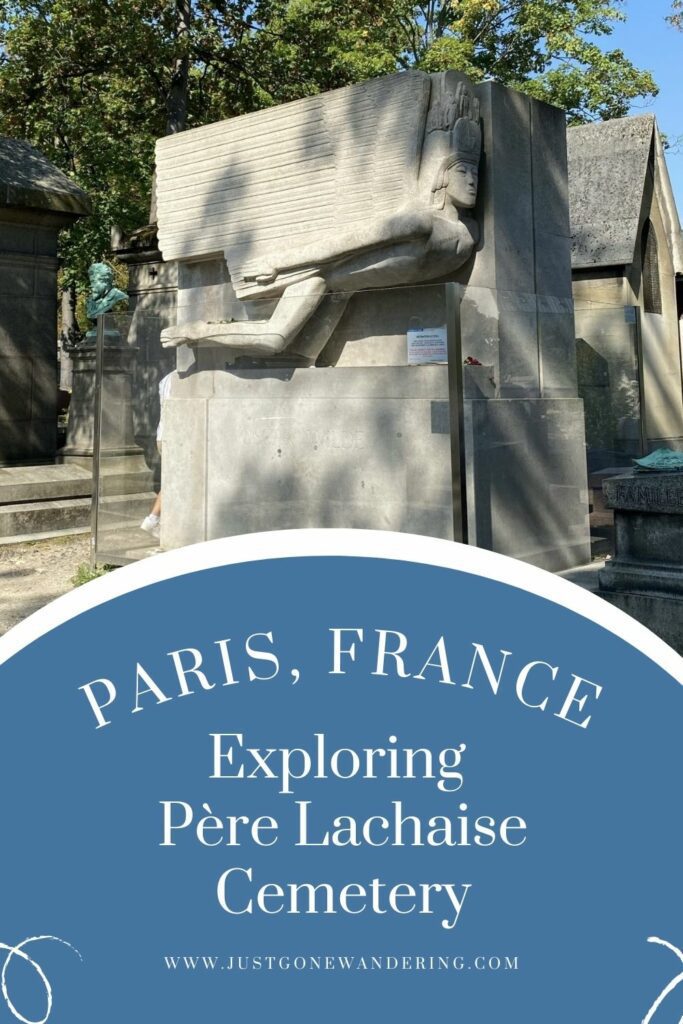
Best Travel Resources
- 👩💻Stay organized with the Deluxe Travel Planner Spreadsheet
- 🛌Search Hostelworld for budget stays
- ✈️Search SkyScanner for discounted flights around the world
- 😺Join TrustedHousesitters and do petsitting in exchange for accommodation
- 💳Carry Chase Sapphire Preferred for a travel-friendly credit card
- 📱Use Airalo for eSIMs around the world
- 🚙Check DiscoverCars for international car rentals
- 👩💻Snag ExpressVPN to stay safe while browsing the web
- 🧑⚕️Sign up with VisitorsCoverage for trip insurance

